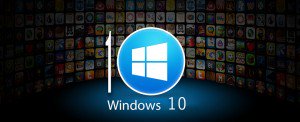By Anca Gagiuc on October 14, 2014 in Technology
The world was expecting the new Windows 9, but it seems that arithmetic is not the strategy used to name the Microsoft OS. The comp any decided to jump straight to 10 and unveiled the new operating system recently in San Francisco. It will become available next year; the early presentation aimed to involve customers in the development process through a Technical Preview available for download.
any decided to jump straight to 10 and unveiled the new operating system recently in San Francisco. It will become available next year; the early presentation aimed to involve customers in the development process through a Technical Preview available for download.
The first thing that catches the eye in the new Windows 10 is the Start menu. It’s divided in two columns; the left one has the traditional Windows 7 design that displays the familiar list of pinned and recent applications, the search box, and the power button for shutting down or restarting the PC. The search box has Windows 8’s features – it includes results from Bing and the Windows store; there is also a separate Search menu next to the Start button that displays trending topics, also from Bing. The right column is a customizable and resizable live tiles-based menu.
Windows 8 Metro apps can now also open in a windowed mode on the desktop, not entering into a full-screen mode by default. This change has been originally demonstrated at Build. Moreover, the modern Windows 8 can be used side by side with the standard Windows desktop app. The combination gives the new interface a sense of the new, but also stays familiar.
Microsoft added a Task View button on the taskbar which, when triggered, displays a multitasking view very similar to Apple’s OS X Expose feature. From here, multiple desktops are available, something Windows always needed. Yet, this is another feature that had as source of inspiration rival operating systems OS X and Linux/Unix. Still, it’s not identical, as Windows 10 has incorporated its productivity-focused snap views. This allows the user to snap apps in the same way they’ve done in Windows 7 and Windows 8, plus a new prompt will suggest apps that can be snapped alongside each other or windowed in more complex ways.
A subtle drop of shadows could be spotted around apps and a new bar on the taskbar that indicates what apps are active. Most probably Microsoft will revise the icons to look more modern in Windows 10.
“One product family. One Platform. One store.”
The statement supports the newly-introduced feature called Continuum (I just can’t help not think about Apple’s Continuity, of course not in what is does, but in how it sounds). It will not be part of the Windows 10 Technical preview. Continuum is a new touchscreen mode for the operating system developed specifically for use in hybrid (notebook-tablet) PCs. It will allow Windows 10 to switch between a regular desktop and a full tablet for 2-in-1 devices.
For instance, if you have a device like the Surface Pro 3 that has a keyboard attached, the UI in Windows 10 works in desktop mode; when the keyboard is detached, Windows 10 will pop up an alert asking the user to go into tablet mode. When choosing “Yes”, the UI switches so that the apps that were working in a windowed mode now take the entire screen.
Developers will be happy to hear that Microsoft plans to deliver one application platform, respectively one way to write a universal app that targets the entire family. Moreover, one store will host all applications to be discovered, purchased and updated across all devices.
Not much information was revealed, leaving plenty of unknowns. We’ll find out the rest in 2015.


